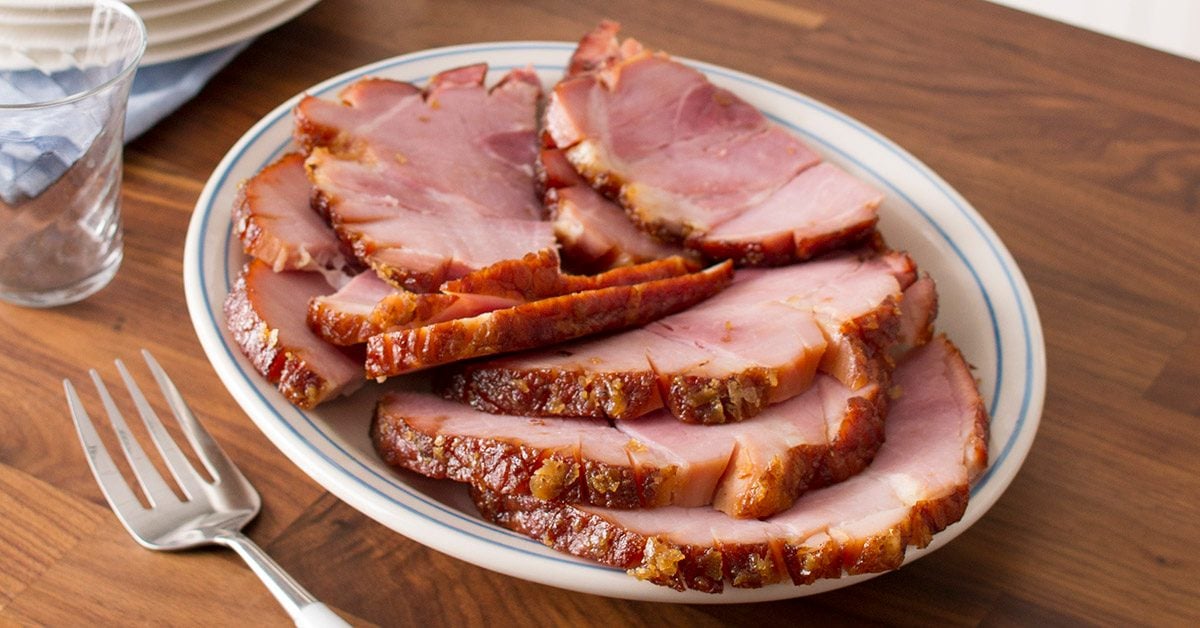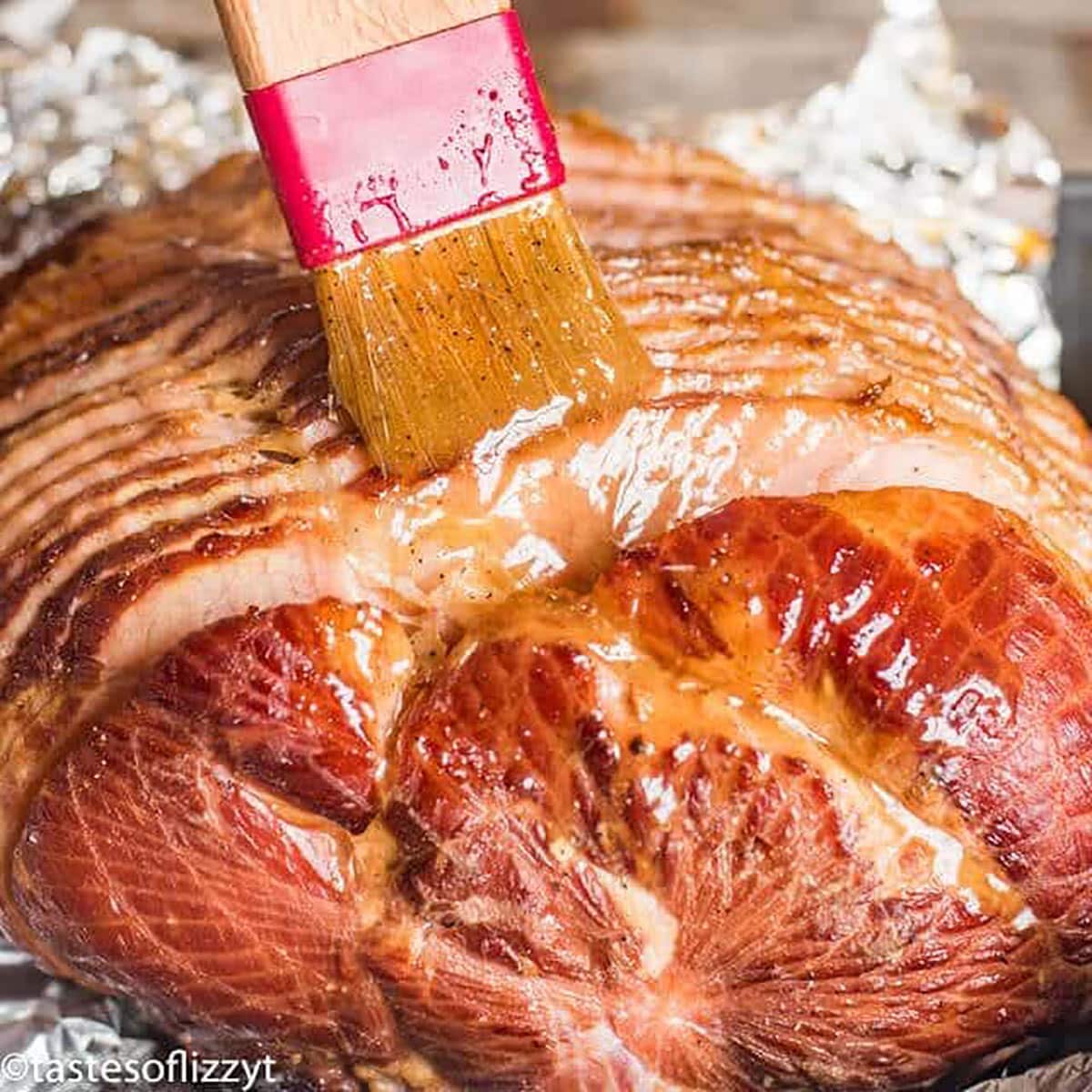Brown Sugar Ham Glaze: It’s the ultimate holiday ham upgrade, transforming a simple protein into a decadent centerpiece. But mastering the perfect glaze is more than just throwing some brown sugar on a ham; it’s about understanding the balance of sweet and savory, the interplay of ingredients, and the art of achieving that perfect glossy sheen. This guide dives deep into the world of brown sugar ham glazes, exploring everything from basic techniques to creative flavor combinations.
We’ll cover the essential ingredients and their roles, different application methods, and how to avoid common pitfalls like burning or sticking. Get ready to explore variations ranging from classic sweet to spicy and savory, and discover how to create a glaze that’s uniquely yours. We’ll even share some killer serving suggestions and ideas for using up those delicious leftovers.
Let’s get glazing!
Brown Sugar Ham Glaze: A Delicious Deep Dive
Brown sugar ham glaze is a classic for a reason. Its sweet and savory profile elevates a simple ham into a show-stopping centerpiece. This guide will explore the creation, application, and enhancement of this versatile glaze, transforming your holiday ham or everyday dinner into something truly special.
Defining Brown Sugar Ham Glaze
A brown sugar ham glaze is a flavorful coating typically applied to ham during baking. Its primary ingredients contribute to a balanced sweetness and savory depth. Variations exist, ranging from subtly sweet to intensely spicy.
Typical ingredients include brown sugar (providing sweetness and moisture), a liquid such as water, apple cider, or orange juice (acting as a binder and adding flavor), and often a touch of mustard or vinegar (for tanginess). Some recipes incorporate spices like cloves, cinnamon, or nutmeg for added warmth and complexity. The ratio of ingredients determines the glaze’s overall flavor profile.
Spicy variations might incorporate chili powder or cayenne pepper, while savory glazes often feature soy sauce, Dijon mustard, or even bourbon. Sweet glazes focus on maximizing the brown sugar’s sweetness, potentially adding ingredients like maple syrup or pineapple juice.
Creating a basic brown sugar ham glaze involves combining brown sugar, a liquid (like water or apple cider), and a touch of mustard or vinegar in a saucepan. The mixture is simmered until thickened, creating a luscious, pourable glaze.
Glaze Application Techniques
Source: ikno.io
Applying the glaze correctly is crucial for achieving optimal results. Different techniques and timing impact the final product’s appearance and flavor.
Discover more by delving into maryland pick 3 and pick 4 for today further.
- Preheat your oven to the temperature specified in your ham’s cooking instructions.
- Place the ham in a roasting pan and bake for a portion of the cooking time without glaze.
- Begin glazing during the last hour of cooking, applying a thin layer at a time to prevent burning.
- Continue glazing every 15-20 minutes, rotating the ham to ensure even coating.
- Monitor the glaze closely to prevent burning; reduce oven temperature slightly if necessary.
Applying glaze early can lead to a caramelized, almost crunchy exterior, while applying it late yields a glossy, sticky finish. To prevent burning or excessive stickiness, use a pastry brush for even application and avoid overly thick layers.
| Method | Description | Advantages | Disadvantages |
|---|---|---|---|
| Basting | Spooning glaze over the ham repeatedly. | Simple, requires minimal tools. | Can be messy, may not provide even coating. |
| Brushing | Using a pastry brush to apply a thin, even layer. | Provides even coating, less messy. | Requires more time and effort. |
| Pouring | Pouring glaze over the ham from a height. | Quick and easy for a large ham. | Can be uneven, glaze may pool in certain areas. |
Flavor Variations and Enhancements, Brown Sugar Ham Glaze

Source: fabulesslyfrugal.com
The possibilities for flavor enhancement are endless. Spices, fruits, and different types of brown sugar significantly alter the glaze’s profile.
Spices like cloves, cinnamon, and nutmeg add warmth and depth. Pineapple juice lends a tropical sweetness, while bourbon introduces a smoky complexity. Mustard provides a tangy counterpoint to the sweetness.
Dark brown sugar imparts a richer flavor and deeper color than light brown sugar. Turbinado sugar offers a coarser texture and slightly less intense sweetness.
Balancing sweetness and savory notes is key. A touch of acidity (vinegar or citrus juice) helps cut through the sweetness, creating a more complex flavor profile.
Serving Suggestions and Pairings
A perfectly glazed ham deserves equally delicious accompaniments and a beautiful presentation.
- Side Dishes: Roasted vegetables (such as asparagus, Brussels sprouts, or sweet potatoes), mashed potatoes, green bean casserole, mac and cheese.
- Presentation: Arrange the ham on a platter, garnished with fresh herbs (such as rosemary or thyme) and fruit slices (such as pineapple or orange).
- Storage: Store leftover ham in an airtight container in the refrigerator for up to 4 days. Repurpose it in sandwiches, salads, or quiches.
- Ideal Texture and Appearance: A perfectly glazed ham boasts a tender interior, a glossy, caramelized exterior, and a rich, deep brown color.
Visual Representation of Glaze
The visual appeal of a brown sugar ham glaze is a significant part of its allure. The color, texture, and sheen are all important indicators of a well-made glaze.
A properly prepared glaze should have a rich, deep amber color, a glossy sheen, and a slightly sticky consistency. A glaze applied early in the cooking process might appear more caramelized and darker, with a slightly crispier texture. A glaze applied late will have a more vibrant, glossy sheen and a smoother texture.
Dark brown sugar creates a deeper, more intense color than light brown sugar. The addition of spices can also influence the glaze’s appearance; cinnamon might create a slightly reddish hue, while cloves might add specks of dark brown.
Last Word

Source: tasteofhome.com
So there you have it – your complete guide to mastering the art of the brown sugar ham glaze! From understanding the fundamental ingredients and techniques to experimenting with unique flavor profiles and stunning presentation, you’re now equipped to create a holiday ham that will impress even the pickiest eaters. Remember, the key is experimentation – don’t be afraid to tweak recipes and find your perfect balance of sweet and savory.
Happy glazing!


